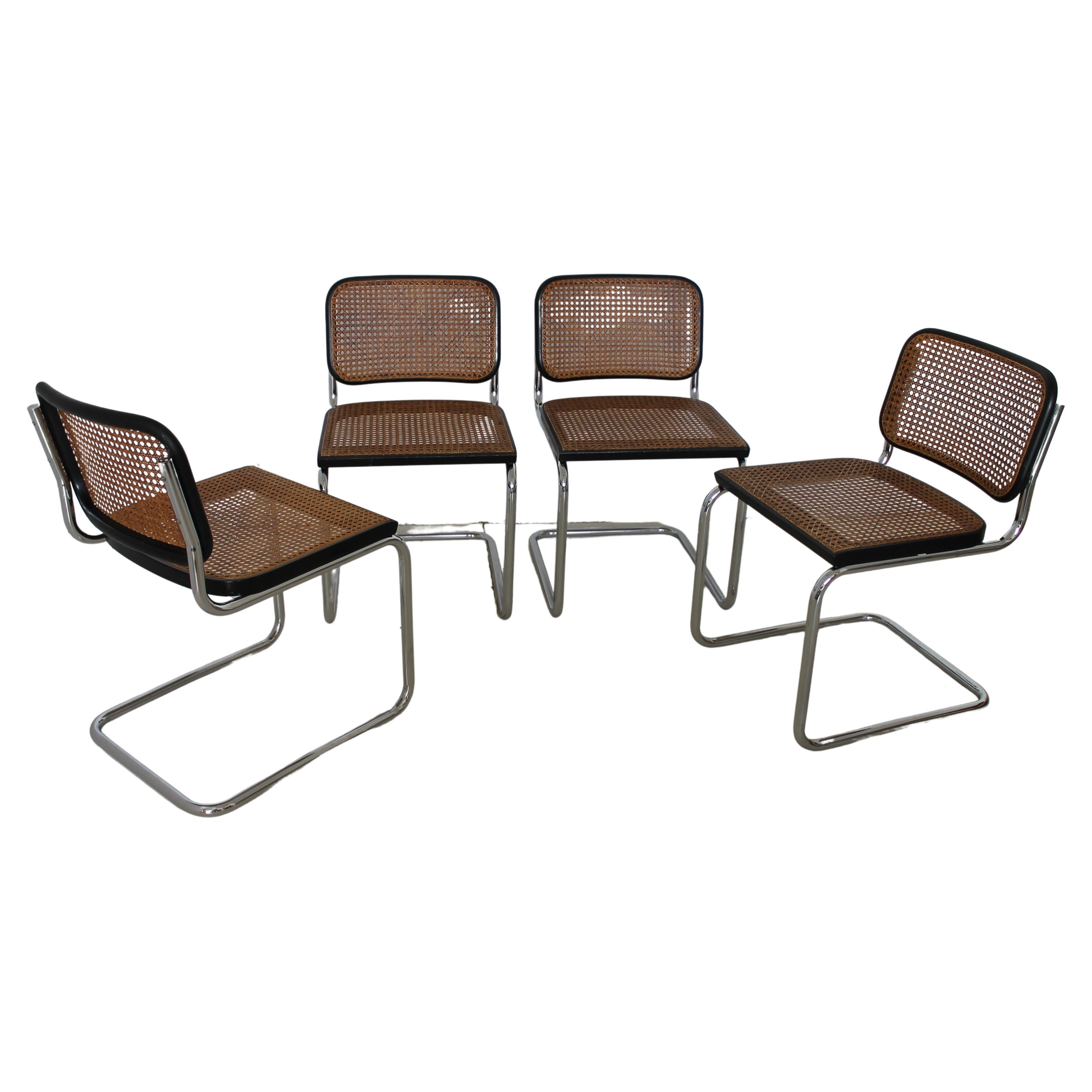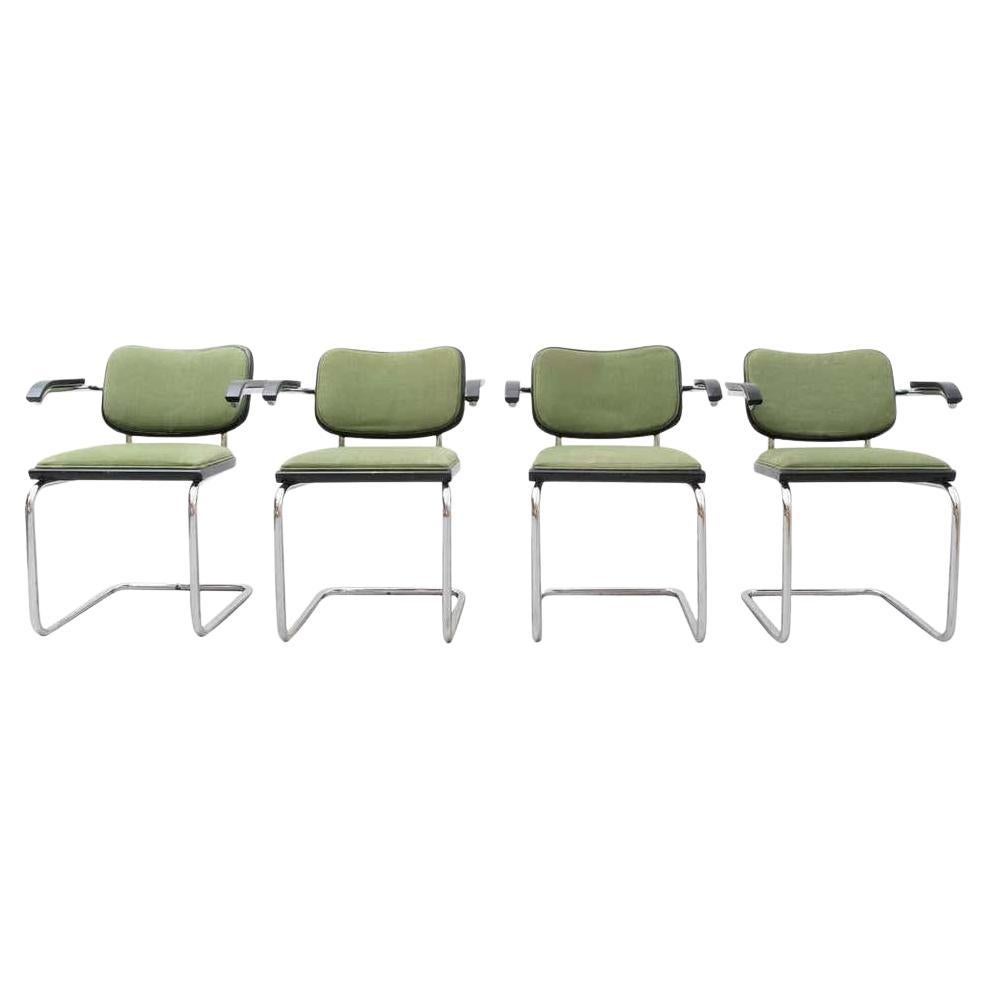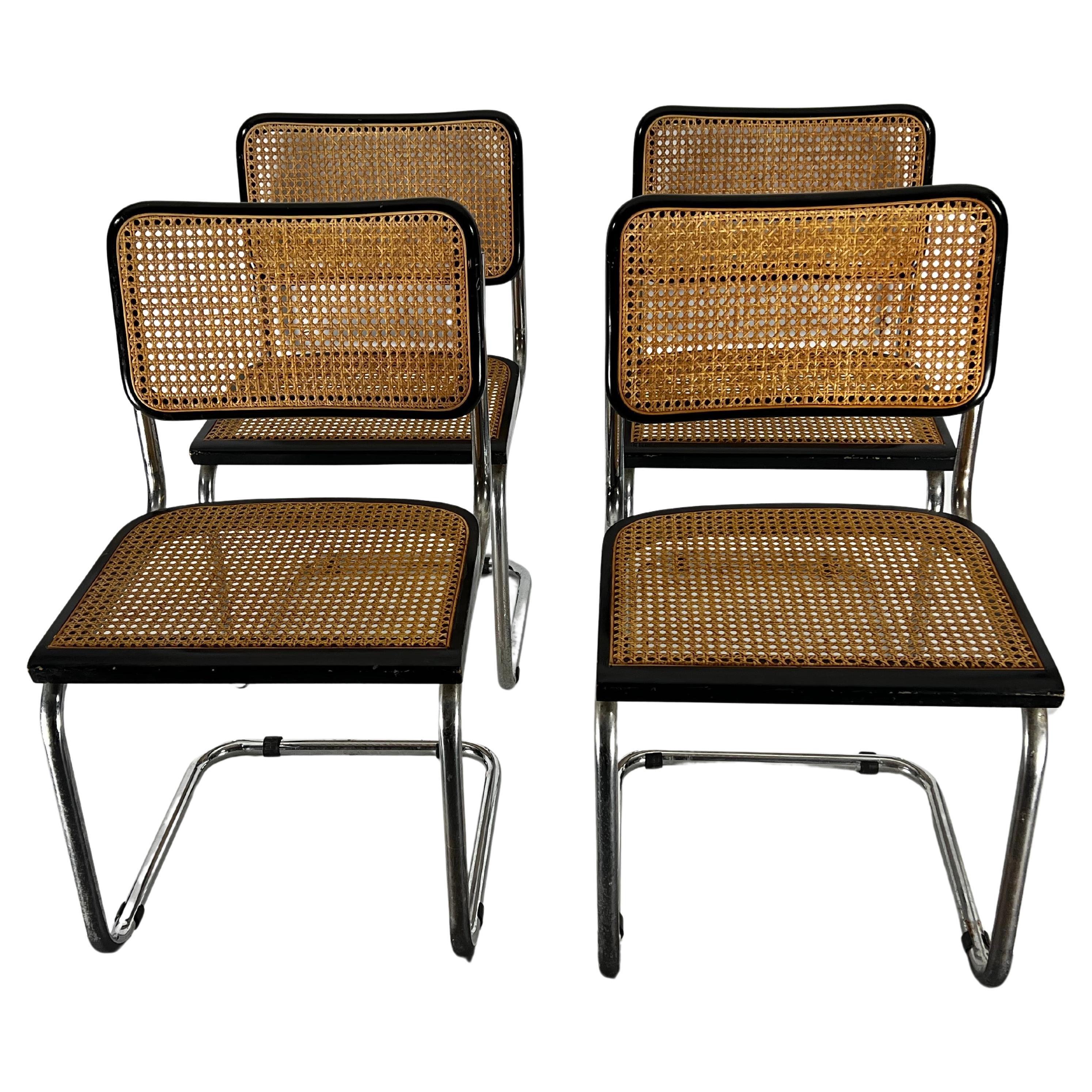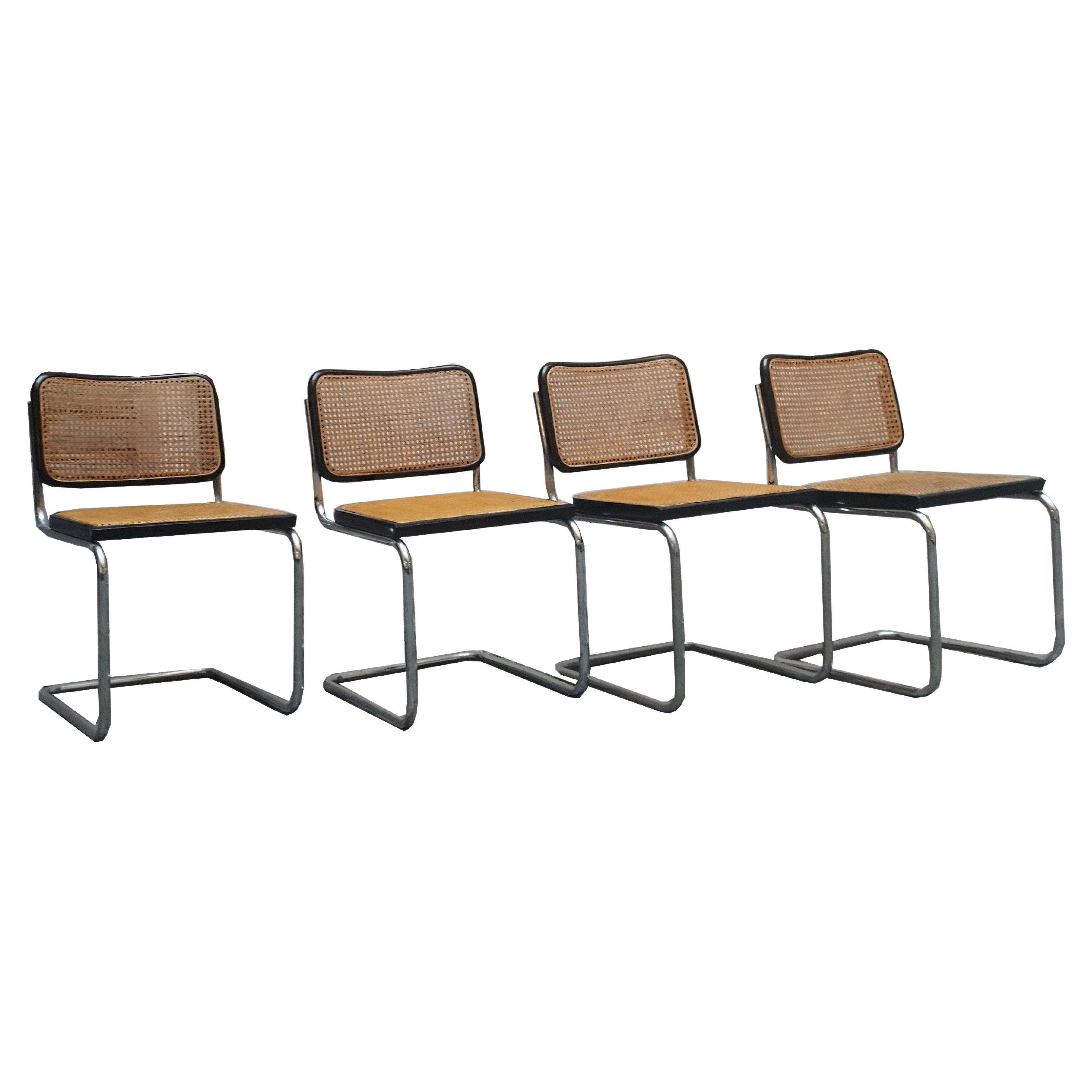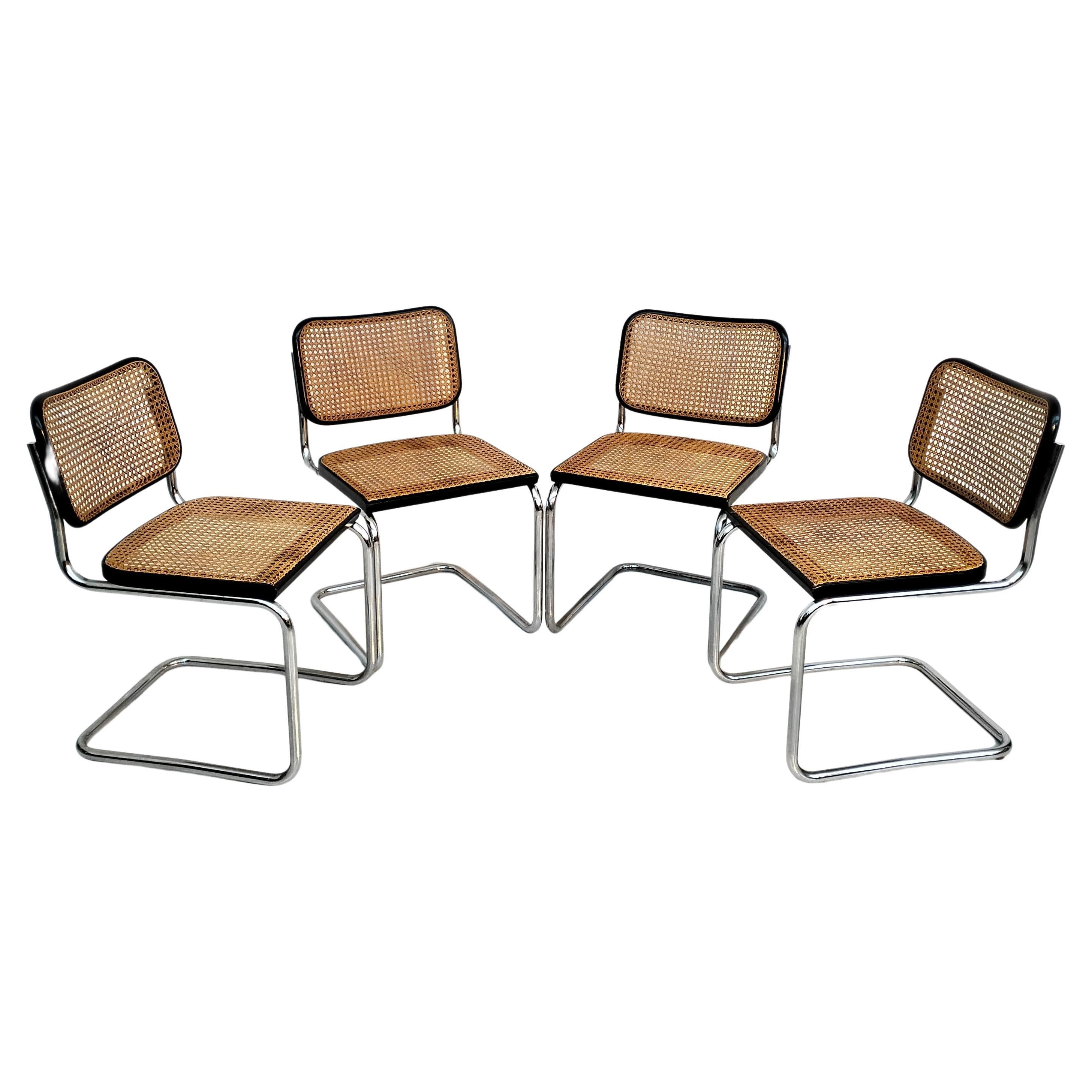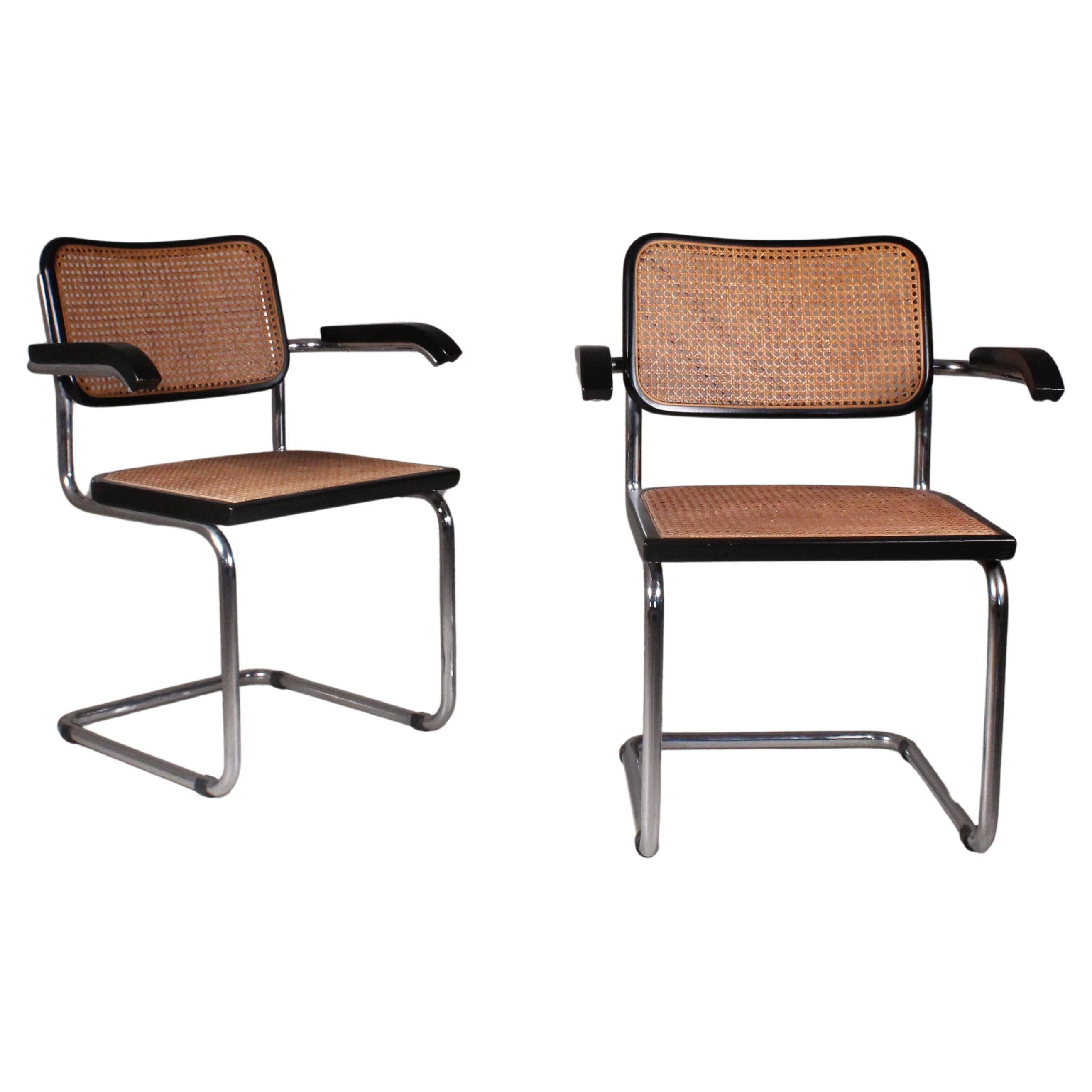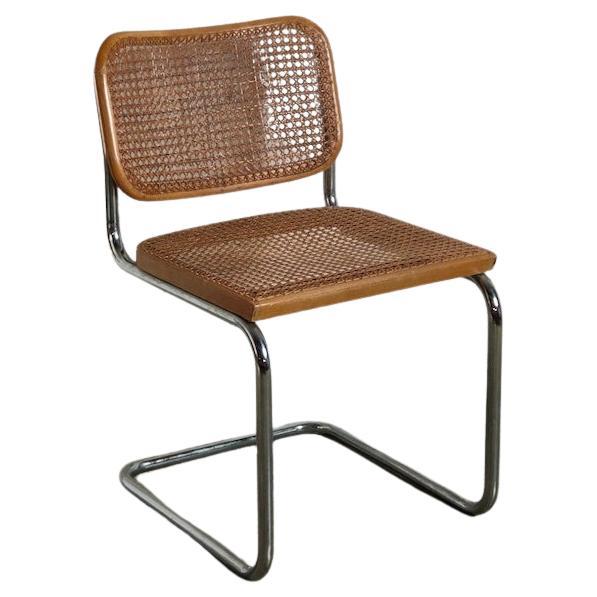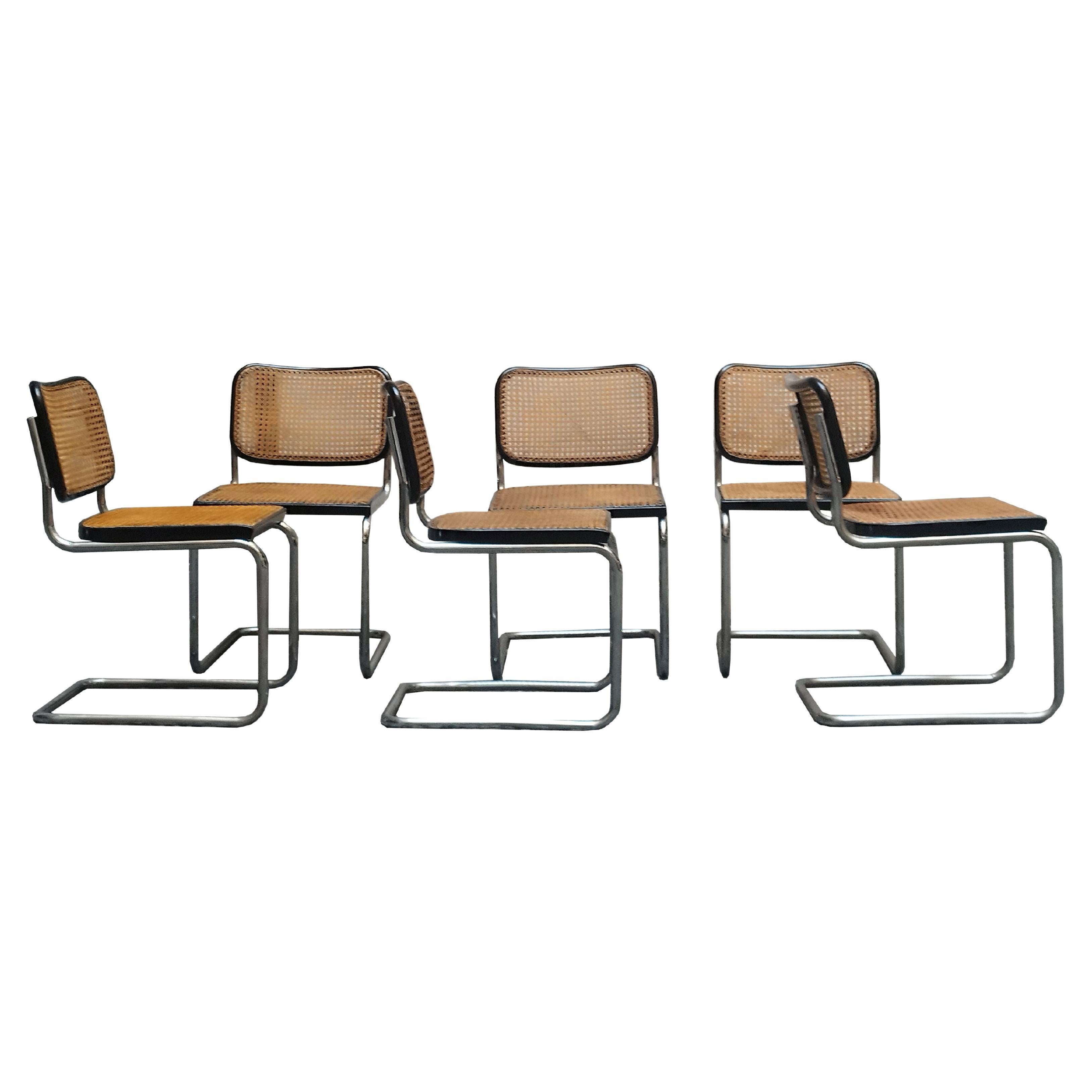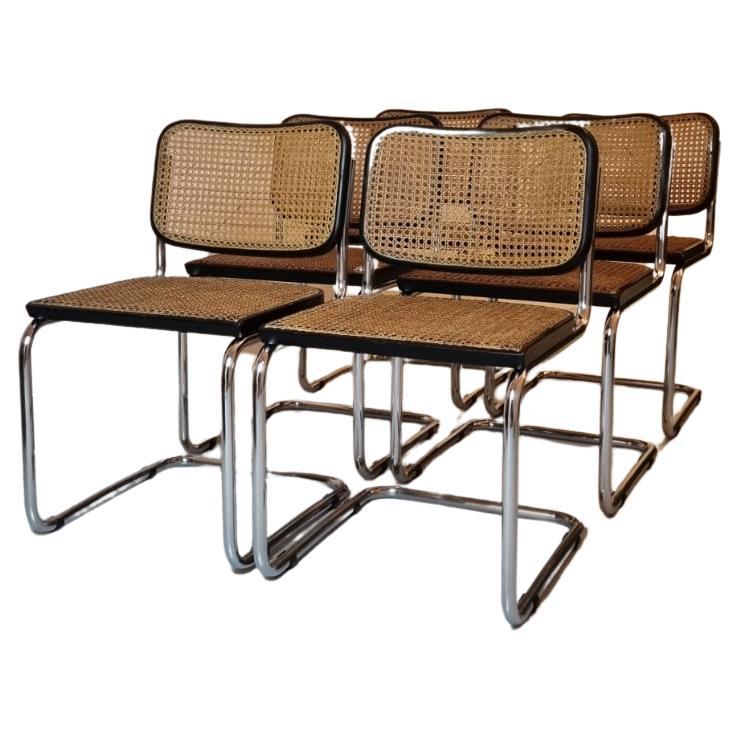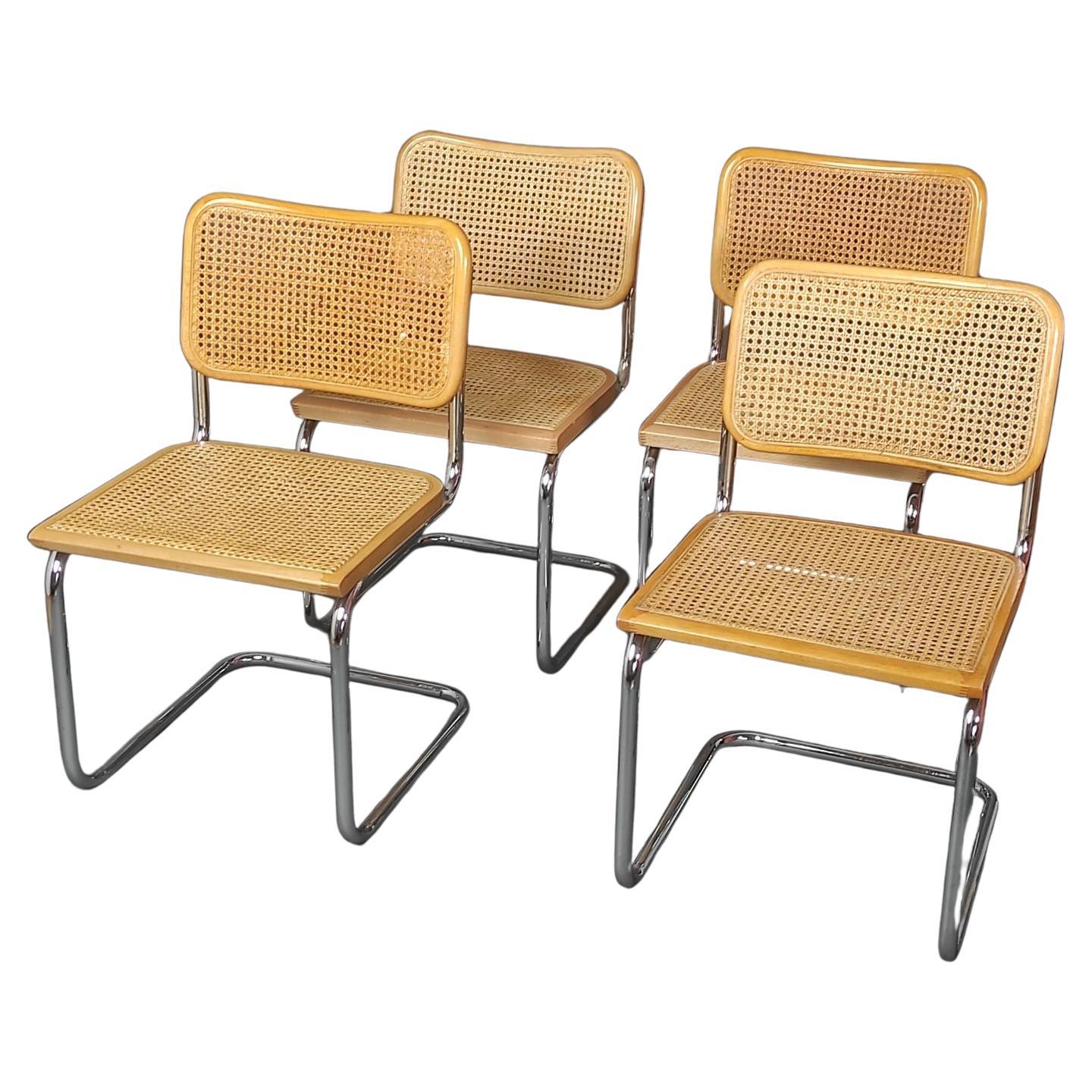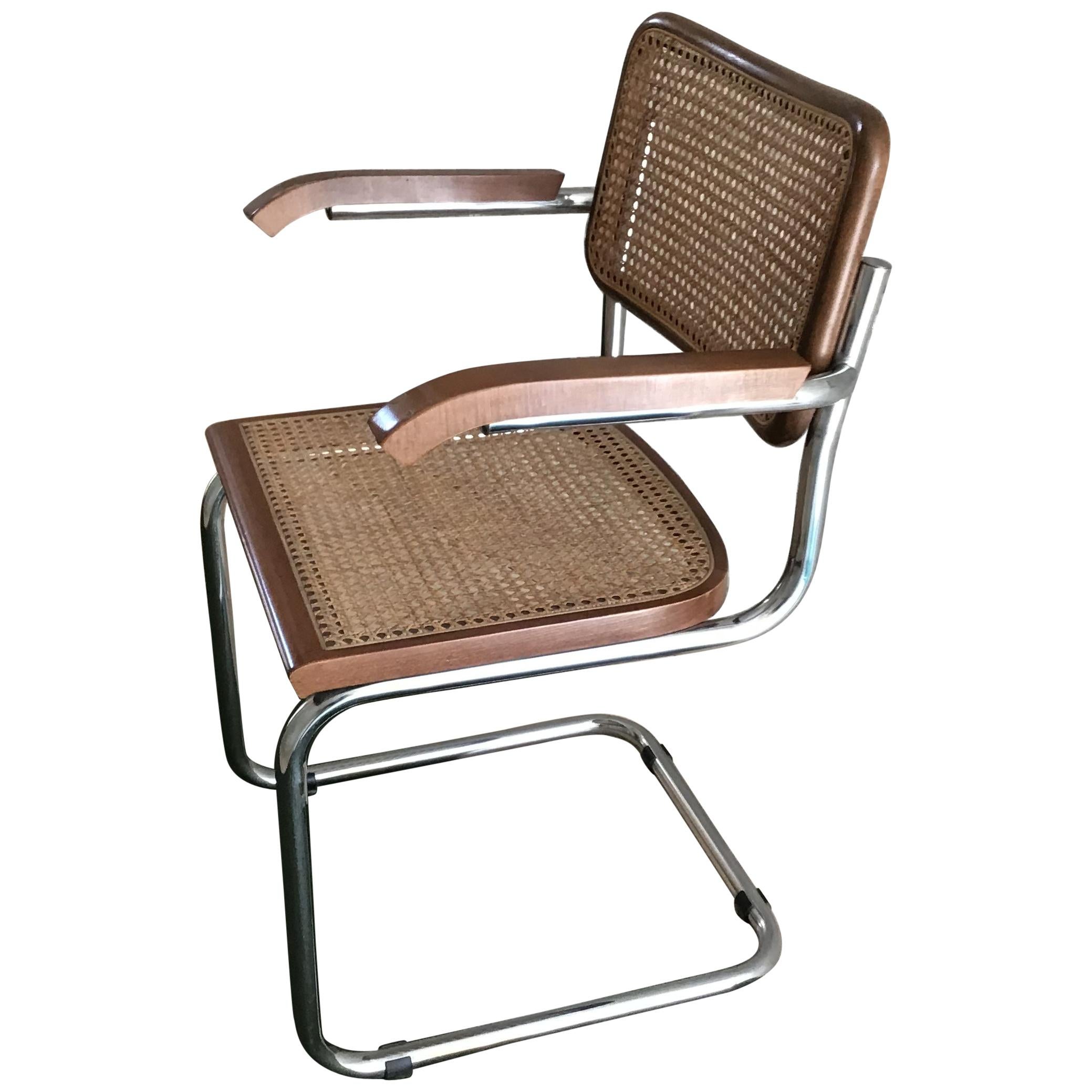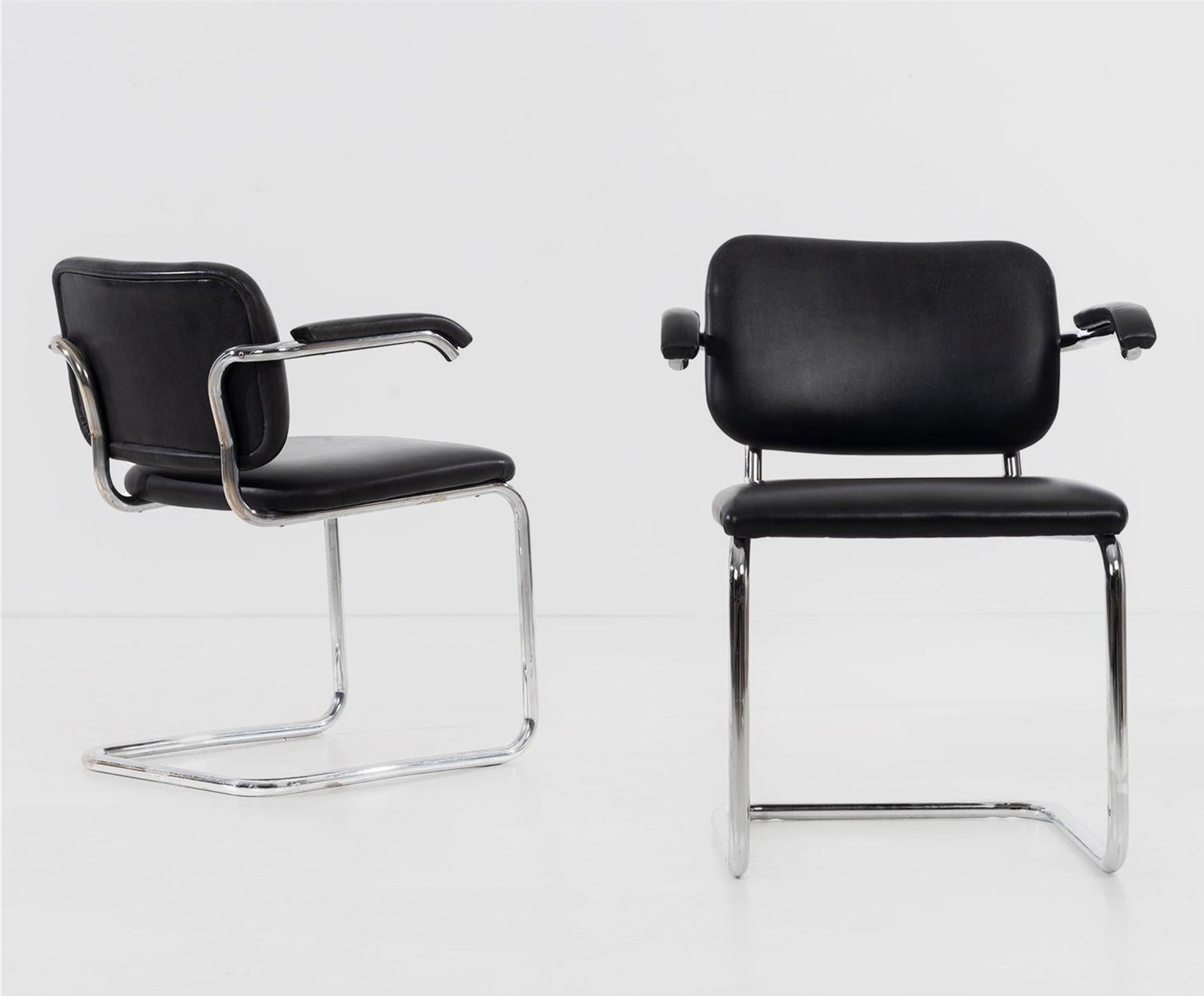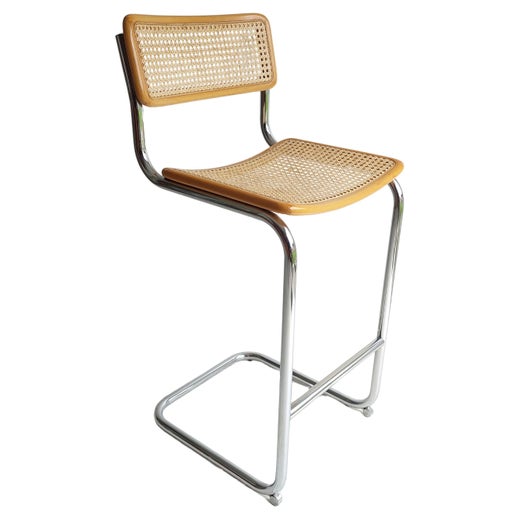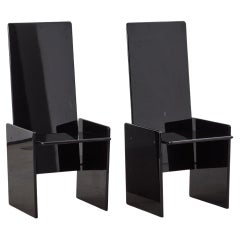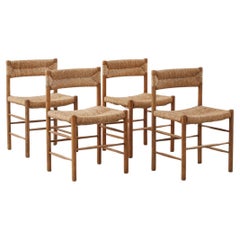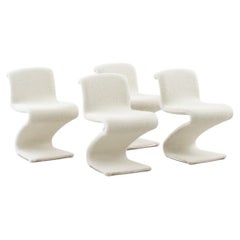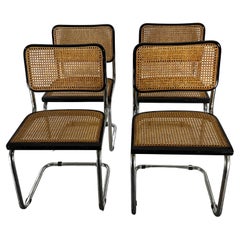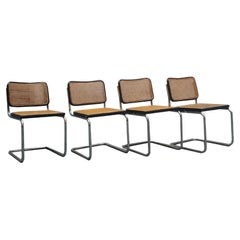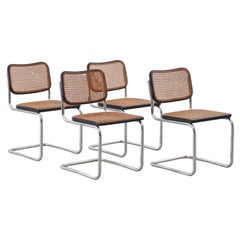
Set of Four Marcel Breuer Cesca Chairs for Gavina, Italy, 1950s
View Similar Items
Set of Four Marcel Breuer Cesca Chairs for Gavina, Italy, 1950s
About the Item
- Creator:Gavina (Manufacturer),Marcel Breuer (Designer)
- Design:
- Dimensions:Height: 33.47 in (85 cm)Width: 18.51 in (47 cm)Depth: 20.08 in (51 cm)Seat Height: 18.12 in (46 cm)
- Sold As:Set of 4
- Style:Modern (Of the Period)
- Materials and Techniques:
- Place of Origin:
- Period:
- Date of Manufacture:1950s
- Condition:Repaired. Wear consistent with age and use. Minor fading.
- Seller Location:London, GB
- Reference Number:Seller: H076a1stDibs: LU1420224801272
Cesca Chair
Ubiquitous but never boring, the Cesca chair has defined casual elegance in the dining room since 1928. Designed by Marcel Breuer (1902–81) for the Austrian furniture maker Gebrüder Thonet, the original Cesca chair combines natural beechwood caning and modern tubular steel for a sensibility that celebrates both handicraft and industrialization. It’s a paragon of Bauhaus design, embodying the school’s “truth to materials” philosophy and adhering to the movement’s emphasis on mass production. In fact, the Cesca chair was the first-ever tubular steel frame chair with a caned seat to be mass produced — a breakthrough for furniture design.
Breuer got his start in architecture after dropping out of the painting program at the Academy of Fine Arts in Vienna. He began apprenticing with a Viennese architect and went on to join the Bauhaus movement in 1921, when he was just 19 years old, eventually becoming a master carpenter at the German arts school. While there, Breuer designed furniture for Sommerfeld House in Berlin, industrialist Adolf Sommerfeld’s private residence, which was conceived by architects Walter Gropius (the Bauhaus school’s founder) and Adolf Meyer. Not long afterward, Breuer’s experiments with tubular steel would yield his Wassily chair, named for his friend, painter and Bauhaus professor Wassily Kandinsky, as well as the Cesca.
Originally called the B32, Breuer renamed the chair in honor of his daughter, Francesca, when Italian manufacturer Gavina began producing it in the early 1960s. Knoll introduced the chair when it acquired Gavina in 1968 and continues to manufacture it today.
And while the Cesca chair’s silhouette has remained the same throughout the decades, Breuer himself later made minor modifications, including the implementation of a shallower curve to the back and the addition of a second piece of steel for the frame to account for both comfort and durability. With the Cesca’s cantilevered construction, Breuer’s design transcended that of the traditional four-legged dining chair, pushing the boundaries of what “everyday” could mean in furniture.
Marcel Breuer
The architect and designer Marcel Breuer was one the 20th century’s most influential and innovative adherents of modernism. A member of the Bauhaus faculty, Breuer — like such colleagues as the architects Walter Gropius and Ludwig Mies van der Rohe, and the artists and art theoreticians László Moholy-Nagy and Josef Albers — left Europe in the 1930s to champion the new design philosophy and its practice in the United States.
Born in Hungary, Breuer became a Bauhaus student in 1920 and quickly impressed Gropius, the German school’s founder, with his aptitude for furniture design. His early work was influenced by the minimalist Dutch design movement De Stijl — in particular the work of architect Gerrit Rietveld. In 1925, while he was head of the Bauhaus furniture workshop, Breuer realized his signature innovation: the use of lightweight tubular-steel frames for chairs, tables and sofas — a technique soon adopted by Mies and others. Breuer’s attention gradually shifted from design to architecture, and, at the urging of Gropius, he joined his mentor in 1937 on the faculty of Harvard and in an architectural practice.
In the 1940s, Breuer opened his own architectural office, and there his style evolved from geometric, glass-walled structures toward a kind of hybrid architecture — seen in numerous Breuer houses in New England — that pairs bases of local fieldstone with sleek, wood-framed modernist upper floors. In his later, larger commissions, Breuer worked chiefly with reinforced concrete and stone, as seen in his best-known design, the brutalist inverted ziggurat built in New York in 1966 as the home of the Whitney Museum of American Art.
Breuer’s most famous furniture pieces are those made of tubular steel, which include the Wassily chair — named after Wassily Kandinsky and recognizable for its leather-strap seating supports — and the caned Cesca chair. Breuer also made several notable designs in molded plywood, including a chaise and nesting table for the British firm Isokon and a student furniture suite commissioned in 1938 for a dormitory at Bryn Mawr College. Whether in metal or wood, Breuer’s design objects are elegant and adaptable examples of classic modernist design — useful and appropriate in any environment.
Find vintage Marcel Breuer seating, storage cabinets and lighting on 1stDibs.
- Pair Kazuhide Takahama Kazuki Chairs for Simon Gavina International, Italy 1969By Kazuhide Takahama, Simon International, GavinaLocated in London, GBSet of four or six available. Kazuhide Takahama was born in Japan in 1930 and after completing his studies in Architecture in Tokyo he started working in Kazuo Fuioka’s studio. In ...Category
Vintage 1960s Italian Modern Chairs
MaterialsLacquer
- Set of Four Charlotte Perriand Dordogne Chairs for Robert Sentou, France c1950By Charlotte Perriand, Robert SentouLocated in London, GBSet of six available. Charlotte Perriand (1903-1999), a key figure of European modernism, famously started her career with a rebuff from Le Corbusier’s studio: “We don’t embroider ...Category
Mid-20th Century French Modern Dining Room Chairs
MaterialsStraw, Pine
- Set of four Gastone Rinaldi 'Z' Chairs, Rima, Italy 1970sBy Gastone RinaldiLocated in London, GBSOLD AS A SET OF FOUR Gastone Rinaldi (1920-2006) was a brilliant designer who also played football for AC Padua and AC Udinese in the 1940s. He took over RIMA, the metal furniture ...Category
Vintage 1970s Italian Modern Chairs
MaterialsUpholstery
- Set of Four Vittorio Nobili Medea Chairs, Fratelli Tagliabue, ItalyBy Vittorio NobiliLocated in London, GBA perfect representation of the organic modern style, the ‘Medea’ chairs were designed by Vittorio Nobili for Fratelli Tagliabue in 1955. The teak wood seats are supported by black e...Category
Vintage 1950s Italian Modern Dining Room Chairs
MaterialsPlywood
- Set of Four 1970s Pompeo Fumagalli ‘Calla’ Chairs, Italy 1970sLocated in London, GBPRICED FOR THE SET. A rare set of ‘Calla’ chairs by Italian modernist designer Pompeo Fumagalli. Perched on a ring-shaped tubular base, the frame ha...Category
Vintage 1970s Italian Post-Modern Chairs
MaterialsUpholstery
- Carlo Scarpa Cornaro sofa for Gavina, Italy 1970sBy Tobia Scarpa, GavinaLocated in London, GBCarlo Scarpa (1906-1978) was an architect who mastered materials, detail, and light. He is most famous for Castelvecchio Museum in Verona, the Olivetti showroom in Venice and the Brion Tomb in San Vito d’Altivole. The Cornaro sofa embodies the intentions of its designer to combine Japanese minimalism...Category
Vintage 1970s Italian Modern Sofas
MaterialsMohair, Wood
- Marcel Breuer, set of Four Cesca Chairs for Gavina. Italy 1960sBy Marcel Breuer, GavinaLocated in Catania, CTFour Cesca chairs designed by Marcel Breuer and produced in Italy by Gavina during the 60s. Very good vintage condition with normal trace of age and use. Slight oxidation on the chro...Category
Mid-20th Century Italian Mid-Century Modern Chairs
MaterialsChrome
- Marcel Breuer for Gavina Set of Four Cesca Chairs, Italy 1970sBy Marcel Breuer, GavinaLocated in Naples, ITGroup of four chairs Mod. Cesca by Marcel Lajos Breuer for Gavina - Italy - with original label. Walnut backrest, chromed steel tubular frame and Vienna straw. Breuer's Cesca chair h...Category
Vintage 1970s Italian Mid-Century Modern Chairs
MaterialsChrome
- Set of 4 Original Cesca Chairs, by Marcel Breuer for Gavina, ItalyBy Marcel Breuer, GavinaLocated in Padova, ITOriginal Cesca chair by Marcel Lajos Breuer for Gavina - Italy - with original label. Back lowered walnut wood - crome tubolari steel frame - Vienn...Category
Vintage 1970s Italian Mid-Century Modern Chairs
MaterialsSteel
- Set of 2 Chairs Cesca, Marcel Breuer, Gavina, 1970By Marcel Breuer, GavinaLocated in Milano, LombardiaSet of 2 Chairs Cesca, Marcel Breuer, Gavina, 1970. The Set of 2 Cesca Chairs, designed by Marcel Breuer in 1970 for Gavina, epitomizes modernist elegan...Category
Vintage 1970s Italian Mid-Century Modern Chairs
MaterialsMetal
- Cesca chair by Marcel Breuer for Gavina 1960sBy Marcel Breuer, GavinaLocated in Padova, ITIn the Cesca chair by Marcel Lajos Breuer for Gavina you can find the top of Made in Italy quality. This work by the austrian designer presents a m...Category
Vintage 1960s Italian Mid-Century Modern Chairs
MaterialsMetal
- Marcel Breuer for Gavina Set of 6 "Cesca" Chairs, Italy 1960sBy Marcel Breuer, GavinaLocated in Naples, ITSet of 6 Cesca chairs designed by Marcel Breuer, produced by Gavina in 1960. The chairs show slight signs of wear, the seats are original Vienna straw. The combination of Vienna stra...Category
Vintage 1960s Italian Mid-Century Modern Dining Room Chairs
MaterialsMetal
